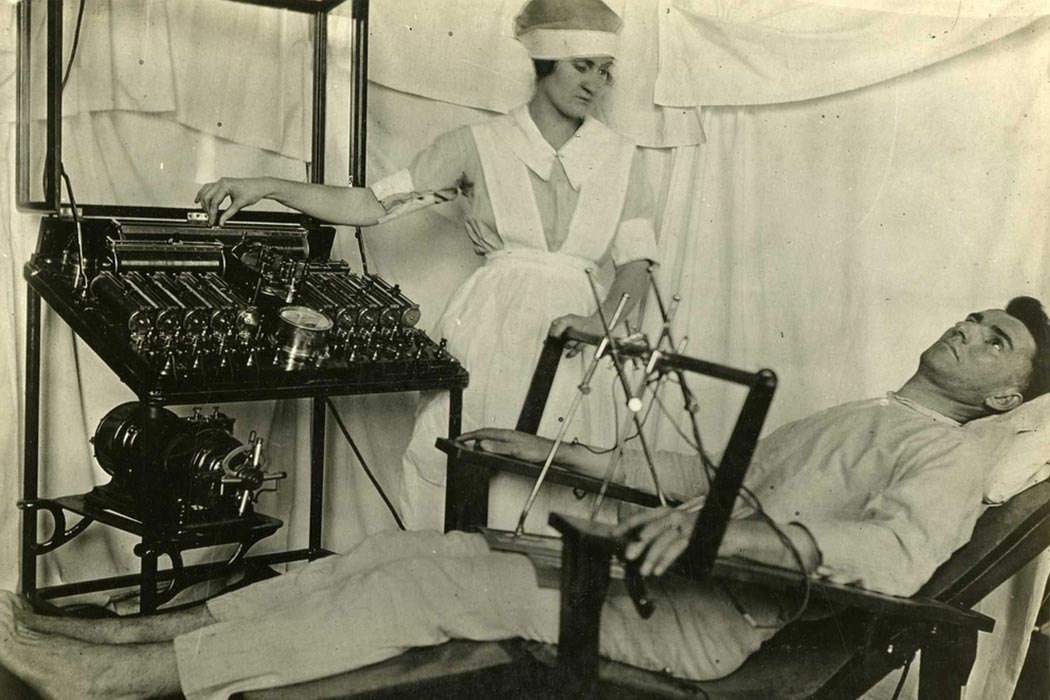In electroconvulsive therapy (ECT), an electrical current is used to induce grand mal seizures as a treatment for psychiatric patients. Some hundred thousand Americans receive the therapy every year, a statistic comparable to the number of appendectomies or hernia surgeries performed. When drug alternatives prove ineffective, it’s considered safe and effective for people suffering from schizophrenia, depression, mania, catatonia, and other psychiatric diseases. As these BMJ authors note, its value is undoubted even if we don’t know how it actually works. But ECT, or electroshock, has a terrible reputation—popularly known as “shock treatment,” it’s perceived as a kind of electrical lobotomy, which has severely undercut its legitimacy.
Max Fink details the history of shock treatment. In Hungary in 1934, seizures were originally induced chemically. At the time, schizophrenic patients were considered untreatable. Ladislas J. Meduna showed this to be wrong, but his chemical injections induced fear and panic in advance of the seizure. In 1938, two Italian researchers used electricity to induce seizures in patients by placing electrodes on the patient’s temples. The seizures were immediate and just as effective as the intravenous method.
Early applications of electroshock were hardly risk-free. Fractures and, more permanently, memory loss were some of the risks. And some patients had the treatment forced on them, which, once publicly known, contributed significantly to its poor image. Coercive psychiatric treatment, after all, should have a bad reputation. Fink calls the 1950s and 1960s the “dark period of electroshock’s history,” as the treatment fell into disrepute and the era of psychopharmacology dawned, promising solutions in pill form.
In 1973, California banned electroshock; that law was later struck down, but other laws severely regulated the practice. Movies like 1963’s Shock Corridor and 1975’s One Flew Over the Cuckoo’s Nest portrayed the treatment in the worst possible light. To this day, the cult of Scientology campaigns against the practice.
It can’t help that, as the BMJ noted, the reason why ECT is effective is unknown. Fink, writing much more recently, reviews the theories about how it works, but it’s still a mystery. Notably, as Meduna showed, electricity isn’t required to set off the seizures (a single seizure isn’t enough to trigger the effects). Fink concludes:
“The broad efficacy of electroshock warrants greater attention to its therapeutic mechanism and to a campaign of education that will encourage its use for the many mentally ill who are poorly served by other therapies.”







